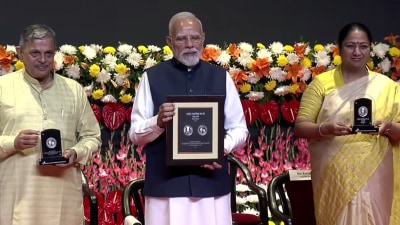Builder-landholders nexus thrives, while public housing takes a walk
MUMBAI, SEPTEMBER 2: The city of Mumbai has around 17,800 hectares of surplus land. Its various housing agencies like BMC and MHADA have i...

MUMBAI, SEPTEMBER 2: The city of Mumbai has around 17,800 hectares of surplus land. Its various housing agencies like BMC and MHADA have in their possession over 246 hectares of land. More than enough, say experts, to rehouse a majority of the 3,000 slum pockets in the city. Yet, when push comes to shove, it has to dip into land that acts as a buffer for the city — non-development zones (NDZ) land at Malwani or environmentally-vulnerable salt pans at Mulund — respectively, which are being “explored” for the resettlement of the Sanjay Gandhi National Park (SGNP) slumdwellers and those on railway tracts.
Is it just because there is no policy for mass public housing or is it easier to play into the demands of the large landholders and builders – only 10 to 12 of who own most of the surplus land in the city – and leave their land untouched for golf courses and megaclubs and snaky high-rises?
That, seemingly is the option facing the city.
The immediate reaction of both Debi Goenka of the Bombay Environmental Action Group (BEAG) and P K Das of the Nivara Hakk Suraksha Samiti (NHSS) — persons otherwise daggers-drawn on the slum issue – is similar, on the salt-pan option. Environmental damage is obvious. “If salt pans are reclaimed for housing the slumdwellers…hills of Mahim and Navi Mumbai and Thane will be cut to fill them,” says a cynical Goenka who filed the petition against encroachment in the SGNP, “we have seen what has happened with the Mahim reclamation for the Worli sea link”.
“You cannot hold the sea. If such a blanket decision is taken, the sea will hit back,” says Das. Having said that though, Das- who is fighting for the housing rights of the SGNP slumdwellers – prefers a case by case study where each coastal plot is examined separately to study its effects on the city. “There are a fair amount of low lying areas which are not channels for draining the sea water off; these areas can be used for development purposes,” he says. “We are not for development rights for all slums on CRZ areas, but considering the pressures on the city, it is time that we do away with generalisations on environment,” he adds.
With the city of Mumbai having extended its boundaries mainly through reclamation, policy makers in the government especially are familiar with the swelling-swallowing-sea phenemenon. “When Mumbai was reclaimed earlier, hundreds of villages on the Konkan coast were wiped out” says Chandrashekhar Prabhu, builder, housing expert and now chairman of the advisory board to the state government on housing policies. “But if the city’s environment and development have to be balanced, we have to take these risks”.
Agreeing that there is enough land, a senior MHADA official says what is required is a well-coordinated effort by all government agencies to list out all eligible slum dwellers and work out a package to relocate them with all essential services.
The question though is, why isn’t land within city limits available for public housing? Admittedly, the government has failed to acquire surplus land under the Urban Land Ceiling (ULC) Act. Land is hoarded, creating an artificial shortage, pushing prices up so it is beyond the reach of the common man. “And it is not just private builders, but also the Central Government, which has huge plots of land lying unused in the prime locations of the city. What business does the government have speculating in land at the cost of the development of the city?” asks Das, who advocates `nationalisation’ of land.
With ULC in the background, builders now are bargaining with the state to relax restrictions on building specifications, against which the government is asking for a percentage of land. How far this succeeds in augmenting the state’s land-bank remains to be seen. Another dampner is MHADA’s abysmal record in making low-income-group houses. The agency set up for making affordable houses, is in fact now competing with private builders.
“We cannot have an outright populistic approach like that of the NHSS where slumdwellers will be allowed to stay wherever they are, nor a completely enviro-centric one of the BEAG,” says Prabhu, who is drafting a housing policy for the Democratic Front government, “it will have to be a judicious mix of the two, and one in which all groups of slumdwellers will have to be taken into confidence”.
He talks of the need for a more optimum use of the existing slums on NDZ lands. “At least 700 of the 3000 slum pockets in the city are on NDZ land. We could give them more FSI to resettle more slumdwellers”, he says. That way, he feels the vacant NDZs could be saved.
He points to the dwindling funds with the state and the crores needed for public housing. “Slums on the harbour line were shifted to Mankhurd. The payment from the railways on this are still due,” he says. Says environmentalist Bittu Sahgal, “if the richest city of India cannot find funds to rehabilitate the very people who service their needs, we need to think of our self-worth. It is a matter of shame that Rs 1,000 crore is found for a toy-bridge from Bandra to Nariman Point, but no money to resettle people to protect the city”.
With the state government issuing notifications to convert the NDZ land at Malwani to residential zones, and salt land from Ghatkopar to Mulund readies to rehouse at least one lakh families, the issue stands just there; as a question of self-worth.



- 01
- 02
- 03
- 04
- 05




























